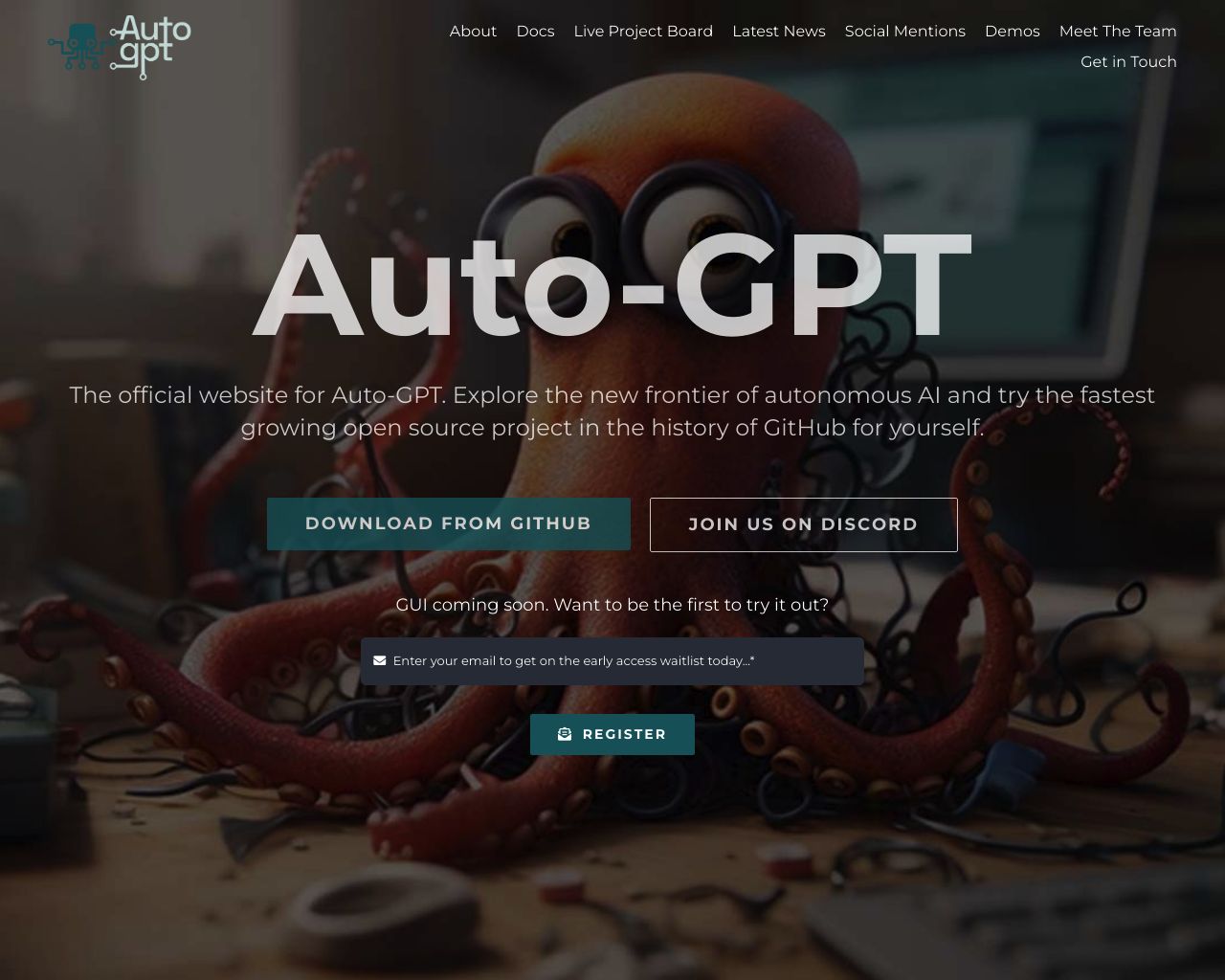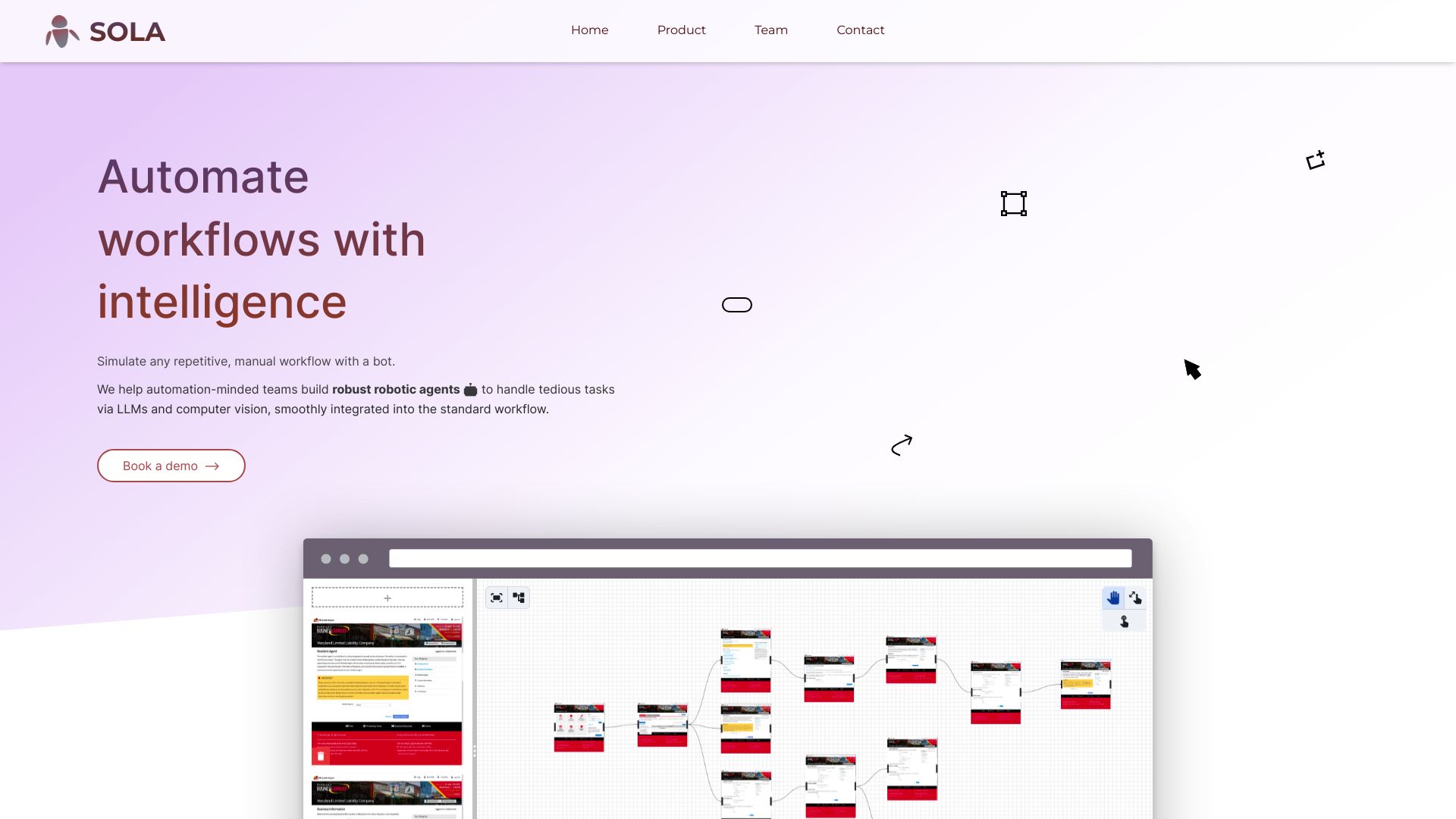AutoGPT vs. Sola: A Comprehensive Comparison of AI Platforms
The AI landscape brims with tools promising to revolutionize workflow automation and agent development. AutoGPT vs. Sola stand out as innovative platforms, each offering unique approaches to harnessing AI’s power. This comparison delves into their core features, strengths, and limitations, exploring how they stack up against SmythOS—our cutting-edge solution designed to elevate AI integration and automation.
Whether you’re a developer seeking robust APIs, a business leader focused on scalability, or an entrepreneur looking for user-friendly AI tools, this analysis will guide you through the nuanced world of AI platforms, helping you make an informed decision for your specific needs.
AutoGPT Overview
AutoGPT revolutionizes AI development by enabling users to create autonomous agents capable of complex task completion. This open-source platform harnesses GPT-4 or GPT-3.5 APIs to build AI agents that operate independently, breaking down user-defined goals into manageable sub-tasks.


AutoGPT’s visual builder empowers users to construct AI agents through an intuitive drag-and-drop interface. This no-code approach democratizes AI development, allowing individuals without extensive programming knowledge to create sophisticated agents. The platform maintains short-term memory for contextual understanding, enabling agents to navigate complex tasks effectively.
AutoGPT revolutionizes AI development by enabling users to create autonomous agents capable of complex task completion… breaking down user-defined goals into manageable sub-tasks.
Key features include multimodal input processing, accepting both text and images, and robust problem-solving capabilities. AutoGPT excels at breaking down large tasks into manageable components, solving them sequentially. The platform supports REST API integration and custom plugins, enhancing its versatility for various applications.
While AutoGPT offers significant advantages, it faces challenges such as potential errors from self-feedback and the risk of hallucinations. The platform’s recursive nature can lead to high operational costs, and the lack of long-term memory may impact performance in certain scenarios. Despite these limitations, AutoGPT’s vision of advancing towards artificial general intelligence (AGI) positions it as a significant player in the AI development landscape.
Sola Overview
Sola empowers businesses to automate workflows using AI-powered bots. This open-source platform leverages Large Language Models and computer vision to streamline repetitive tasks across various industries.


Sola’s intuitive interface allows users to create bots from screen recordings in minutes. The platform’s Workflow Recorder captures on-screen processes, while the Annotation Editor labels steps. The Bot Builder then converts these annotated workflows into AI-powered agents capable of handling tasks like data entry, scraping, and filing.
Sola’s intuitive interface allows users to create bots from screen recordings in minutes.
The platform shines in its versatility, working seamlessly with browser-based sites and desktop software without complex integrations. Sola’s bots adapt and incorporate new logic automatically, enhancing their problem-solving capabilities over time. This learning ability sets Sola apart in the automation landscape.
While Sola offers impressive features, it lacks some advanced capabilities found in other platforms. The absence of hosted environments for development and production, multi-agent collaboration, and certain deployment options like webhooks or site chat may limit its applicability for some users. Additionally, the platform doesn’t appear to offer a hosted vector database or support for various file types, which could restrict its data handling capabilities.
Feature Comparison
AutoGPT and Sola offer distinct approaches to AI agent development, each with unique strengths and limitations. AutoGPT excels in autonomous task completion, leveraging GPT-4 or GPT-3.5 APIs to create agents that operate independently. Its visual builder and no-code editor democratize AI development, allowing users without extensive programming knowledge to create sophisticated agents. AutoGPT maintains short-term memory for contextual understanding and supports multimodal input processing.
Sola, on the other hand, focuses on workflow automation through AI-powered bots. Its Workflow Recorder and Annotation Editor simplify bot creation from screen recordings, making it accessible for users across various industries. Sola’s bots adapt and incorporate new logic automatically, enhancing their problem-solving capabilities over time. This learning ability gives Sola an edge in handling evolving tasks.
However, significant feature gaps exist between the two platforms. AutoGPT offers more robust development tools, including debug mode and API deployment options, while Sola lacks these advanced features. In terms of security, AutoGPT supports OAuth authentication, whereas Sola’s security features are not explicitly mentioned. These differences highlight the need for users to carefully consider their specific requirements when choosing between the two platforms.
Feature Comparison Table
| AutoGPT | Sola | SmythOS | |
|---|---|---|---|
| CORE FEATURES | |||
| Hosted Agents (Dev, Production) | ❌ | ❌ | ✅ |
| Explainability & Transparency | ❌ | ✅ | ✅ |
| Debug Tools | ✅ | ❌ | ✅ |
| Multimodal | ✅ | ❌ | ✅ |
| Multi-Agent Collaboration | ✅ | ❌ | ✅ |
| Audit Logs for Analytics | ❌ | ✅ | ✅ |
| Work as Team | ✅ | ❌ | ✅ |
| Agent Work Scheduler | ❌ | ✅ | ✅ |
| SECURITY | |||
| Constrained Alignment | ❌ | ❌ | ✅ |
| IP Control | ❌ | ❌ | ✅ |
| COMPONENTS | |||
| Huggingface AIs | ✅ | ❌ | ✅ |
| Zapier APIs | ✅ | ❌ | ✅ |
| Classifiers | ✅ | ❌ | ✅ |
| Data Lakes | ❌ | ❌ | ✅ |
| DEPLOYMENT OPTIONS (EMBODIMENTS) | |||
| Staging Domains | ❌ | ❌ | ✅ |
| Production Domains | ❌ | ❌ | ✅ |
| Deploy as Scheduled Agent | ❌ | ✅ | ✅ |
| Deploy as GPT | ✅ | ❌ | ✅ |
| DATA LAKE SUPPORT | |||
| Hosted Vector Database | ❌ | ❌ | ✅ |
| Sitemap Crawler | ❌ | ❌ | ✅ |
| YouTube Transcript Crawler | ❌ | ❌ | ✅ |
Best Alternative to AutoGPT and Sola
SmythOS emerges as the superior alternative to AutoGPT and Sola for agentic AI automation. Our platform combines the best of both worlds, offering autonomous task completion like AutoGPT with the workflow automation focus of Sola, while providing additional capabilities that set it apart.
Unlike AutoGPT’s limited development tools and Sola’s lack of advanced features, SmythOS delivers a comprehensive suite for creating and managing AI agents. Our visual builder and no-code editor democratize AI development, allowing users of all skill levels to craft sophisticated agents without extensive programming knowledge. We provide debug mode, API deployment options, and OAuth authentication to ensure robust security — capabilities lacking in Sola.
SmythOS delivers a comprehensive suite for creating and managing AI agents… allowing users of all skill levels to craft sophisticated agents without extensive programming knowledge.
SmythOS excels in ease of use, offering an intuitive drag-and-drop interface and pre-built templates that streamline agent creation. Our extensive feature set spans hosted agents, multi-agent collaboration, audit logs, and work scheduling — addressing limitations in both AutoGPT and Sola. We support unlimited use cases through flexible deployment options, scalable infrastructure, and integration with various AI models and APIs.
Beyond core functionality, SmythOS delivers unmatched versatility. Our platform enables deploying agents as APIs, webhooks, scheduled tasks, or chatbots. We provide a hosted vector database, support for multiple data formats, and advanced components like classifiers and data lakes. This expansive toolkit empowers users to tackle complex challenges across industries, far surpassing the capabilities of AutoGPT and Sola.
SmythOS delivers unmatched versatility… empowers users to tackle complex challenges across industries, far surpassing the capabilities of AutoGPT and Sola.
By choosing SmythOS, users gain access to a future-proof platform that combines ease of use with powerful features. We enable rapid development of sophisticated AI agents while providing the scalability and flexibility to grow alongside your needs. For those seeking a truly comprehensive and user-friendly solution for AI agent creation and management, SmythOS stands out as the clear leader in the field.
Conclusion
AutoGPT and Sola offer unique approaches to AI agent development and workflow automation. AutoGPT excels in creating autonomous agents for complex tasks, while Sola focuses on streamlining repetitive workflows through AI-powered bots. Both platforms have their strengths, with AutoGPT’s visual builder democratizing AI development and Sola’s screen recording feature simplifying bot creation.
However, SmythOS emerges as the superior choice, combining the best of both worlds and offering additional advanced features. Our platform’s intuitive drag-and-drop interface rivals AutoGPT’s visual builder, while our extensive integration ecosystem surpasses Sola’s capabilities. SmythOS supports multi-agent collaboration, provides robust deployment options, and offers unparalleled scalability for enterprise-level applications.
SmythOS stands out with its “Create Once, Deploy Anywhere” approach, allowing users to build agents that seamlessly integrate into multiple environments. Our platform supports a vast array of AI models and over 300,000 integrations, enabling users to create sophisticated AI workflows tailored to their specific needs. For those looking to get started quickly, we offer a diverse range of AI-powered agent templates covering multiple business categories.
We invite you to experience the future of AI agent development and workflow automation with SmythOS. Create a free SmythOS account today and discover how our platform can revolutionize your approach to AI integration and automation. With unlimited agents and a 30-day money-back guarantee, you can explore the full potential of SmythOS risk-free.
Last updated:
Disclaimer: The information presented in this article is for general informational purposes only and is provided as is. While we strive to keep the content up-to-date and accurate, we make no representations or warranties of any kind, express or implied, about the completeness, accuracy, reliability, suitability, or availability of the information contained in this article.
Any reliance you place on such information is strictly at your own risk. We reserve the right to make additions, deletions, or modifications to the contents of this article at any time without prior notice.
In no event will we be liable for any loss or damage including without limitation, indirect or consequential loss or damage, or any loss or damage whatsoever arising from loss of data, profits, or any other loss not specified herein arising out of, or in connection with, the use of this article.
Despite our best efforts, this article may contain oversights, errors, or omissions. If you notice any inaccuracies or have concerns about the content, please report them through our content feedback form. Your input helps us maintain the quality and reliability of our information.
